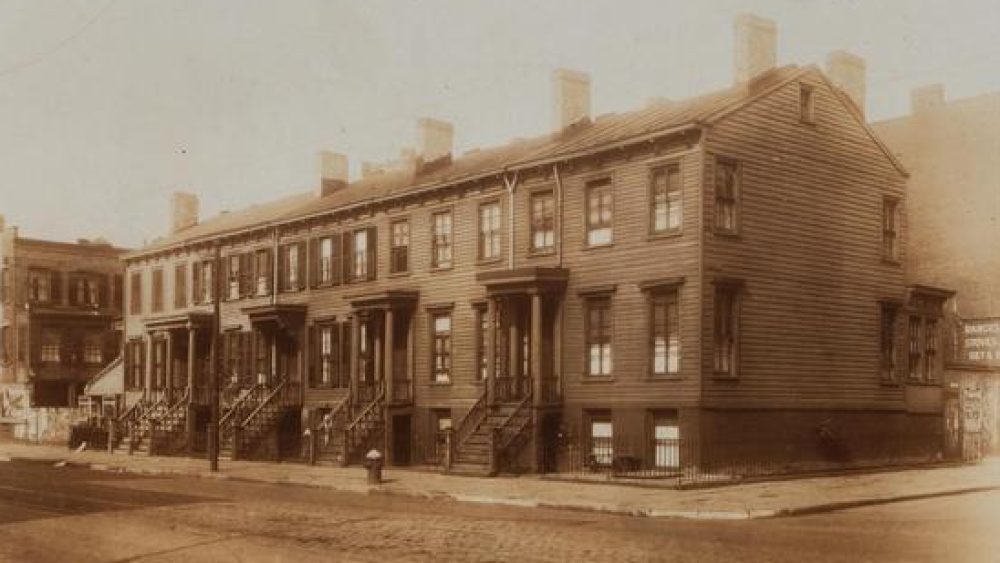I’M JUST AS PROUD as can be. I’m all puffed up with pride right now. It’s not that one of my kids has done something extraordinary, or even myself. No, it’s the ash tree in the backyard of my building in Boerum Hill, Brooklyn.
I always knew it one of the biggest trees in the nabe. That tree is 150 feet tall, I’ll wager. A real monster. (You can see its trunk in the photo above.) I remember seeing it from above, high above — from the observation deck on the 29th floor of the Williamsburgh Savings Bank Building when the tower was sporadically open to the public in the early 1980s and my daughter and I used to go up there to eat lunch and view the bank’s big clock in close-up. I’d look down on my house, a block away, and see nothing but a green cloud of foliage emerging from the rectangle of the backyard, bigger by far than any other green cloud for blocks around.
What I didn’t know is that my ash is so very fine — practically worthy of landmarking. I found this out in the aftermath of Irene, when my tenant on the top floor sent me some photos. The ash — perhaps it too should be given a proper name — had shed a few large branches in the storm. Again. It has a habit of doing that. We’ve had it taken care of from time to time, and it always costs a bundle.
 By utter coincidence, one of the leading arborists in Brooklyn, William Logan of Urban Arborists, happens to live adjacent to that backyard, and he knows the tree well. So I called him on Monday and he came to take a look. There was a 30-foot- long, Y-shaped branch straddling the brick wall of the building next door; another had landed on the roof deck of a neighboring building on State Street — a building that happens to be right next door to the house where Bill has lived for more than 20 years. He could practically reach over and dispatch that branch, which is why I called him and not the tree service in Staten Island, which tends to be less pricey.
By utter coincidence, one of the leading arborists in Brooklyn, William Logan of Urban Arborists, happens to live adjacent to that backyard, and he knows the tree well. So I called him on Monday and he came to take a look. There was a 30-foot- long, Y-shaped branch straddling the brick wall of the building next door; another had landed on the roof deck of a neighboring building on State Street — a building that happens to be right next door to the house where Bill has lived for more than 20 years. He could practically reach over and dispatch that branch, which is why I called him and not the tree service in Staten Island, which tends to be less pricey.
Bill came to take a look, and a few hours later, emailed an estimate with this note:
Dear Cara, It was good to see you again and to look at the big ash. I am glad that it did not suffer too serious damage. It is a very fine ash, one of the best I know of in Brooklyn.
Well. Can you see why I am so very proud? And pleased. My property’s value has probably just shot up like the Dow every other day.
Then he went on…
We will repair the storm damage and inspect the tree to make sure that no other branches have been cracked or otherwise compromised. We will also remove any significant dead branches over the neighbors’ property.
Here is the proposal:
To prune as described above one approx 40” diameter ash to repair storm damage, examine branches and remove major deadwood $895.00
Ugh. I hadn’t asked Bill to examine the rest of the tree or take any prophylactic measures against further breakage. But ya know, it’s a very fine ash — one of the best in Brooklyn, I hear. It needs special care. It’s probably quite old. Venerable, even.
That ash is worth any price. Yes, indeed. That’s my very fine ash.



















